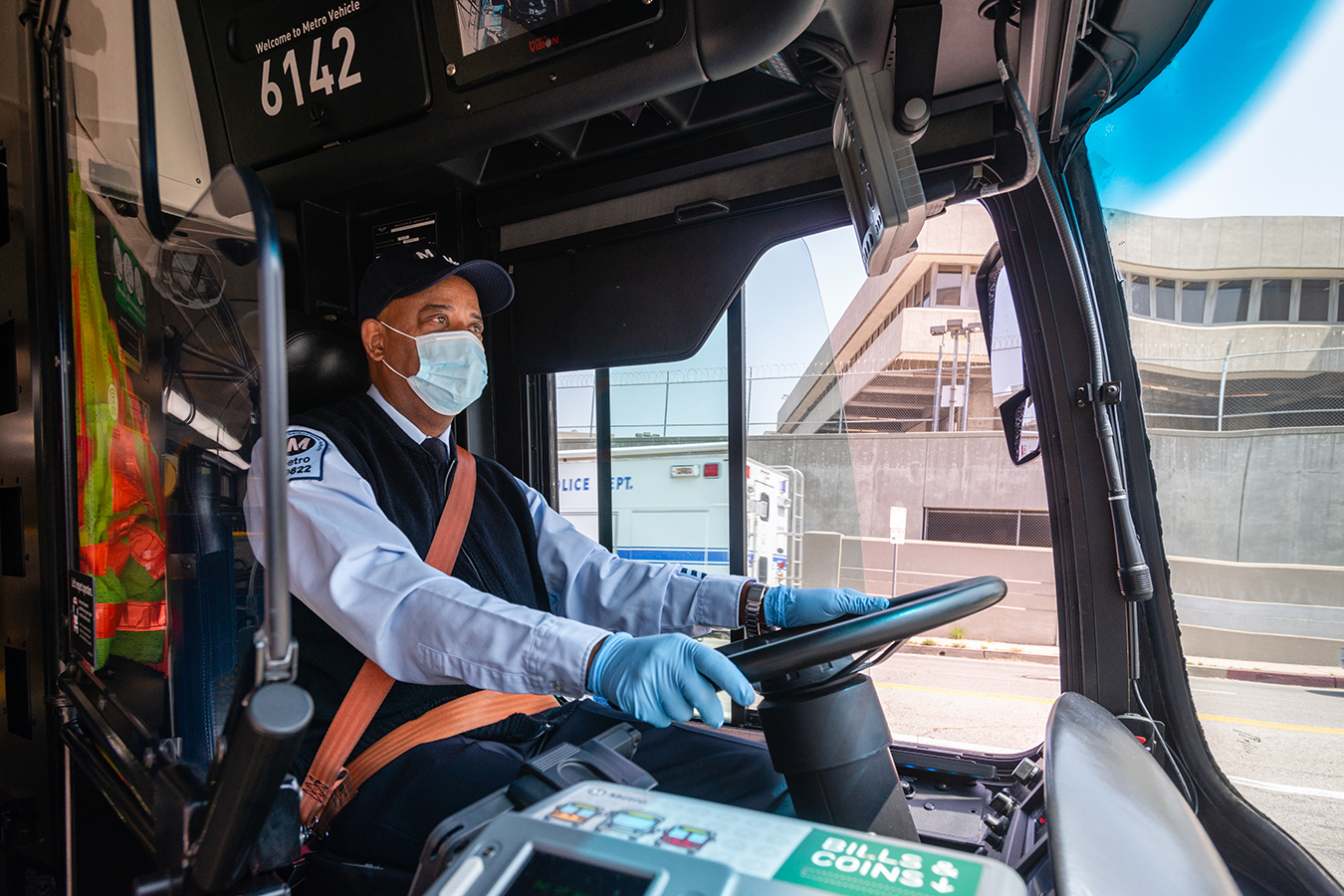
L.A. Metro bus driver Voris Lombard sits behind a partial Plexiglas shield and wears gloves and a mask while driving. After each shift, Lombard removes his uniform and shoes before entering his home, he says. “It’s almost like you’re going through a hazmat routine.”(Heidi de Marco/KHN)
LOS ANGELES — Mary Pierson boarded a nearly empty L.A. Metro bus at the corner of Atlantic Boulevard and Riggin Street in Monterey Park one recent afternoon.
Pierson, 69, uses a wheelchair and relies on public transportation to get around. She takes the bus a few times a week from Long Beach to various parts of Los Angeles to run errands and shop for groceries. Today, she took the No. 68 to the bank.
“I’m glad they’re still running,” said Pierson, who wears a mask, gloves and sunglasses on board and disinfects her wheelchair after every trip. “I live alone and need to get out of the house.”
She’s also often alone on the bus. Transit ridership has plummeted since mid-March, when states began imposing stay-at-home orders. The Los Angeles County Metropolitan Transportation Authority, known as L.A. Metro, said ridership has fallen 64% on buses — about 1.2 million people rode them each day before COVID-19 hit — and by 76% on rail.
Despite the risk of the coronavirus in public places, people are still boarding public buses and trains because they have no other options to get to work, go shopping and fill prescriptions.
“We’re still seeing over 400,000 people per day,” said Brian Haas, communications manager for L.A. Metro. “What that tells us is that we’re a lifeline for people.”
Perhaps the most vulnerable are the bus drivers and train operators. The Transport Workers Union of America has lost 96 members to COVID-19, the vast majority in New York City, the union says. None of the fatalities have been in California.
New methods of sanitation and decontamination, like ultraviolet lighting, should be used, said John Samuelsen, the union’s president. “Masks are the very minimum of what can be done to increase everybody’s safety,” he said. “We need to be thinking about what post-pandemic public transport will look like.”
To date, L.A. Metro has supplied front-line employees with more than 715,000 pairs of gloves, 385,000 masks and 40,000 bottles of personal hand sanitizer.
Until recently, face coverings had been optional on public transit in L.A. County.
But in early May, Los Angeles Mayor Eric Garcetti announced that all passengers on all Los Angeles Department of Transportation buses would be required to wear face coverings to reduce the spread of the virus. The department is a municipal agency that operates within the city and is separate from L.A. Metro. L.A. Metro started requiring passengers to wear face coverings May 11.
Because of the low ridership numbers, social distancing is usually not a problem on buses, said L.A. Metro bus driver Voris Lombard. “When people get on the bus, they have plenty of room to sit.”

Lombard, 59, checks out his bus at 10 a.m. before starting his route, which goes from downtown to Montebello. Lombard, a bus operator for 20 years, says he feels fortunate to still be working. “The people that require our services are essential workers,” he says. “That’s the satisfaction I get out of the job.”(Heidi de Marco/KHN)
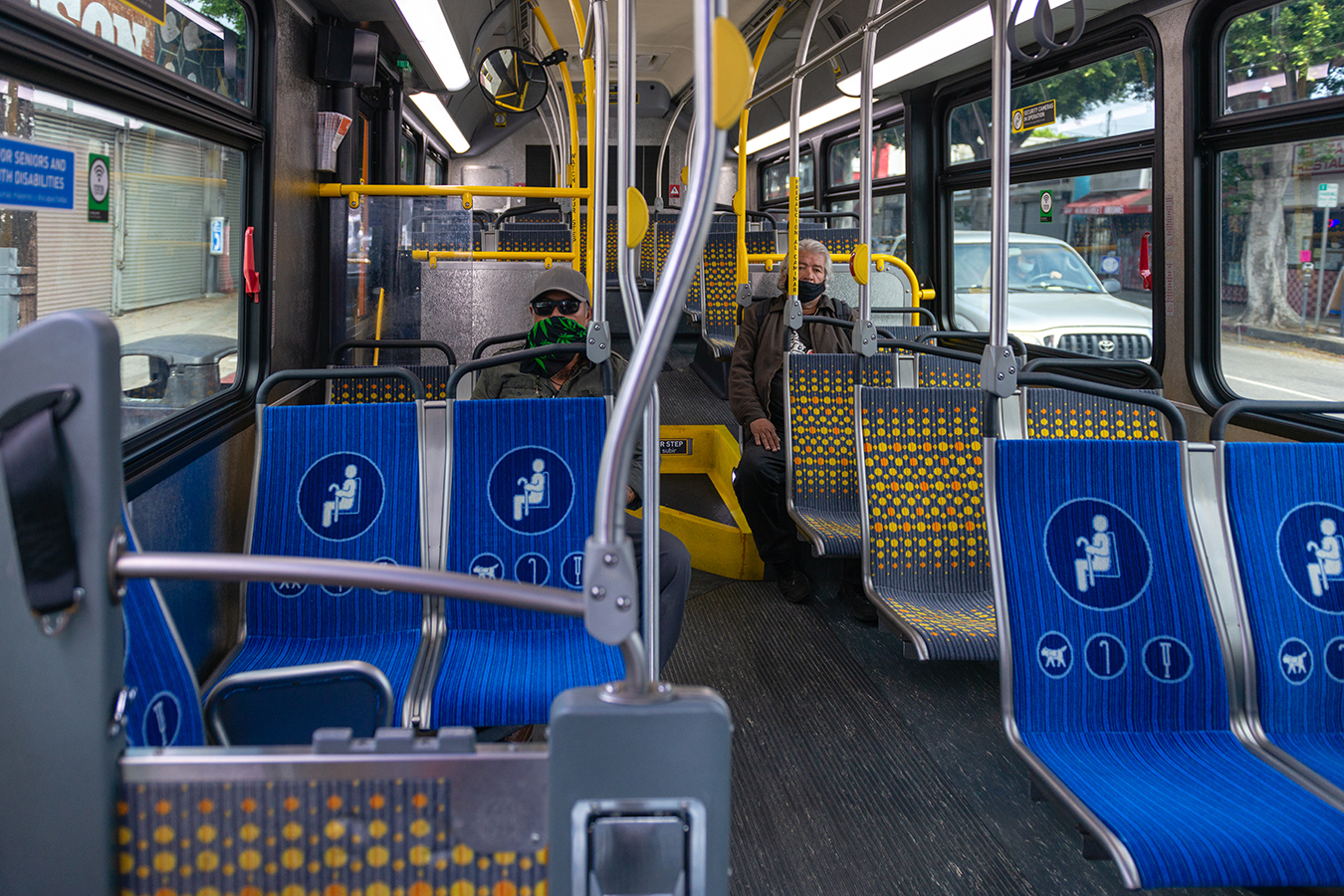
Only two passengers ride Lombard’s bus on a recent morning.(Heidi de Marco/KHN)

Jose Salazar, 63, prepares to disembark. Salazar has depended on public transportation exclusively since he took his car to the shop a few weeks ago, and rides the bus several times a day to get around East L.A. and Monterey Park.(Heidi de Marco/KHN)
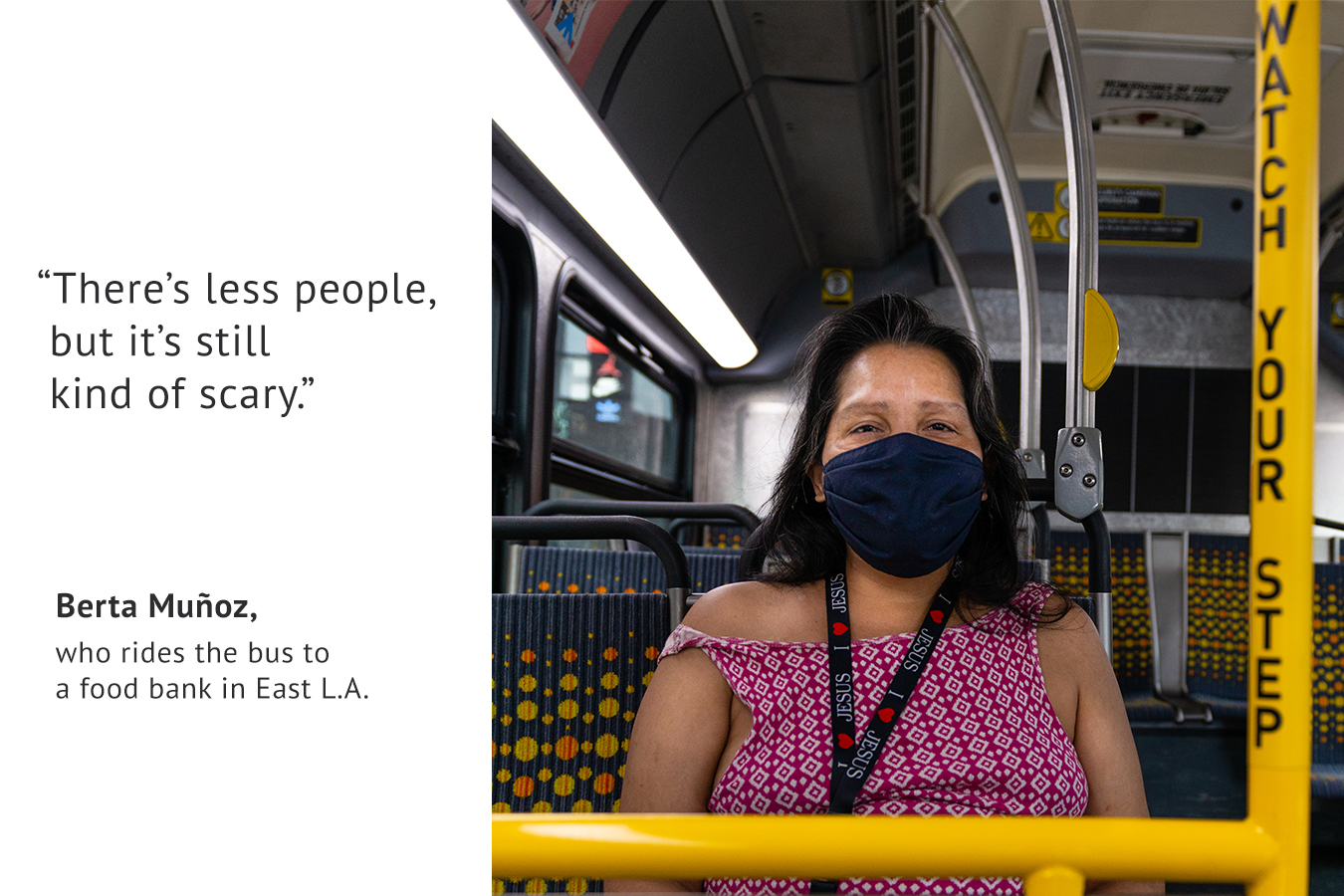
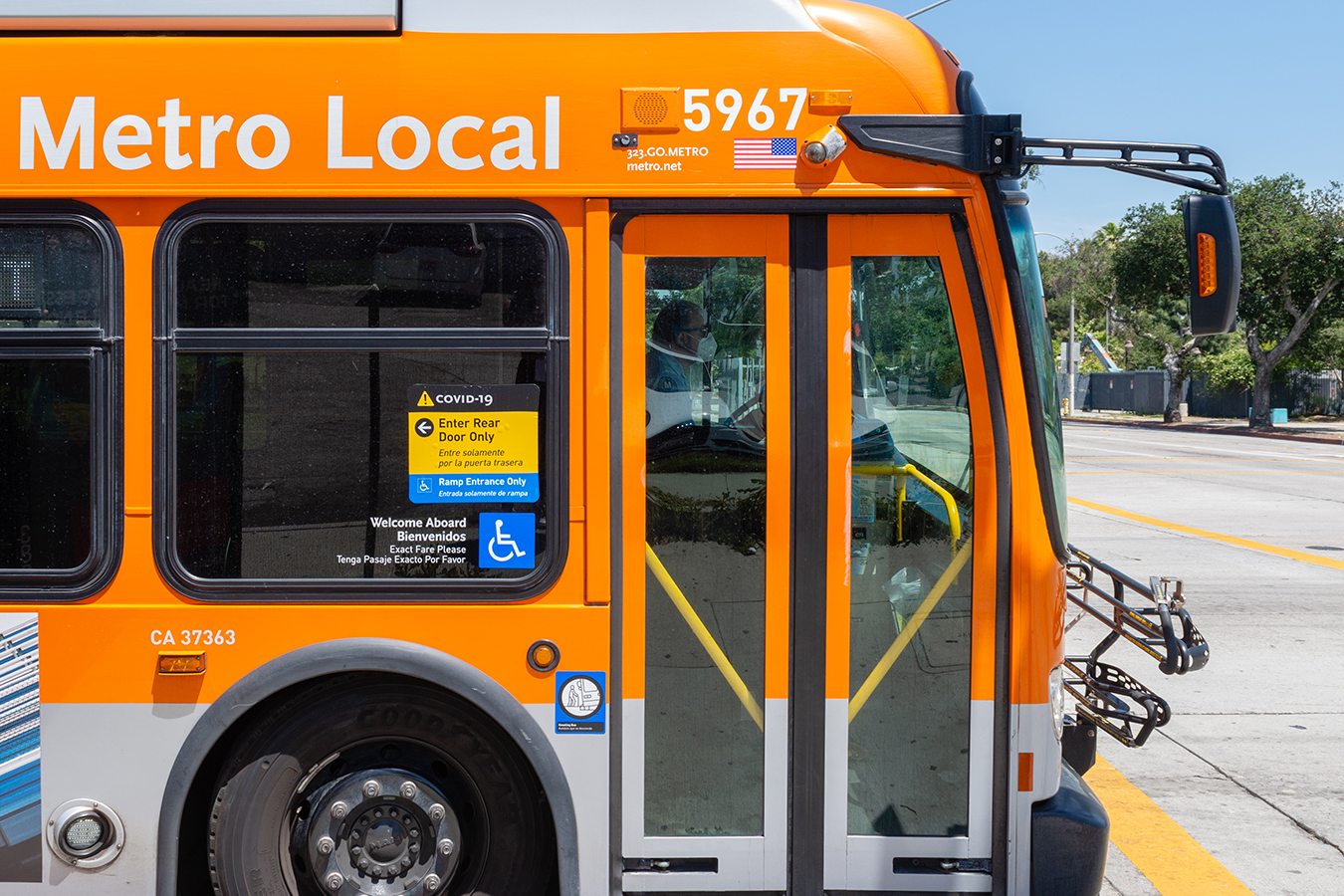
A sign near the front entrance of the bus asks passengers to board from the rear door. Rear-door boarding was implemented in March to help maintain proper social distancing and keep drivers safe. L.A. Metro asks its bus riders to “have” their fares, but is not requiring them to pay them, says Brian Haas, the system’s communications manager.(Heidi de Marco/KHN)
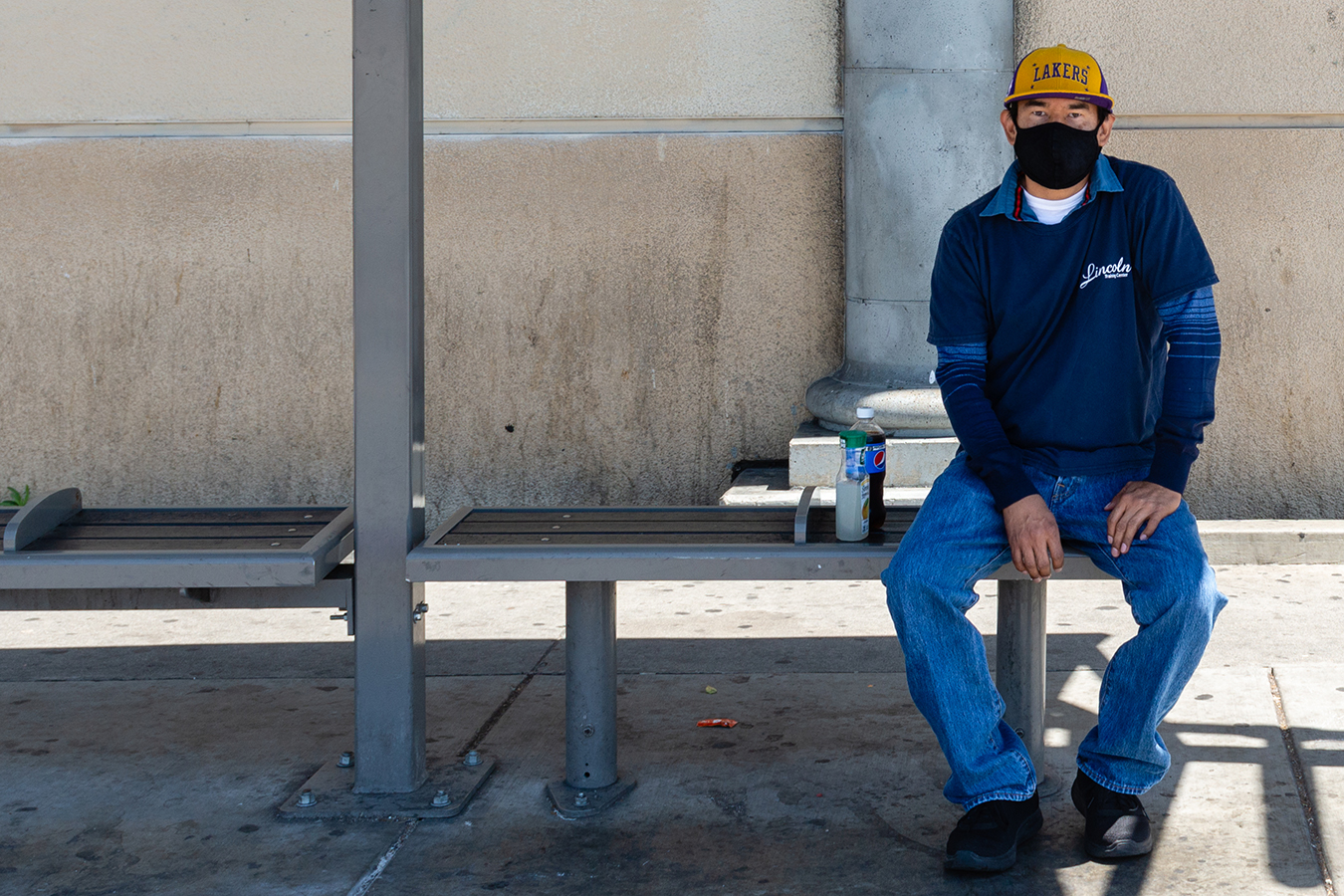
Rojelio Artalejo, 45, waits to board the No. 770 bus in Monterey Park. Artalejo is a janitor at a grocery store and depends on public transportation to get to work.(Heidi de Marco/KHN)
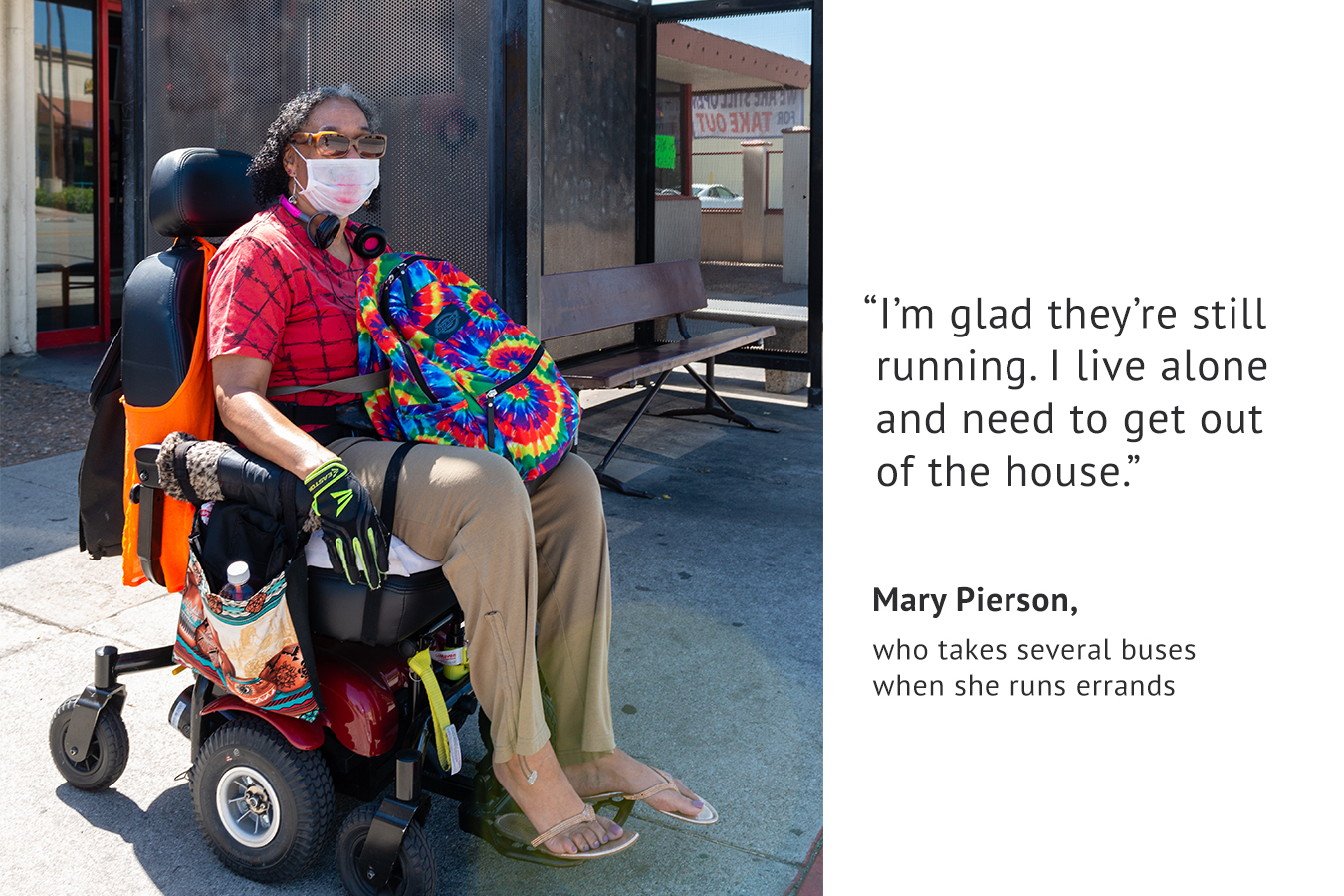

For extra protection, Mary Pierson wears batting gloves when she takes public transportation.(Heidi de Marco/KHN)
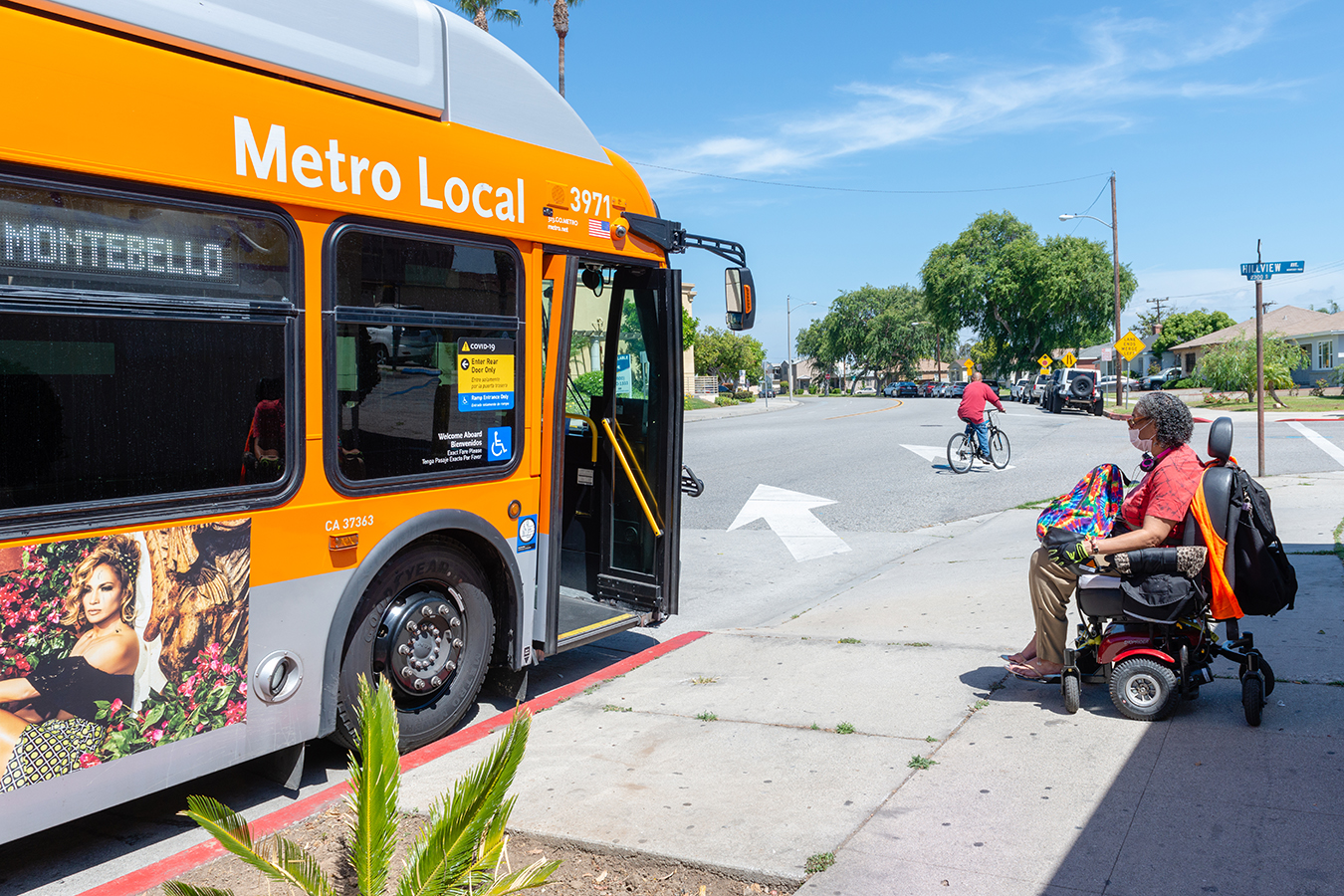
The front door of the bus is reserved for people with mobility devices, such as wheelchairs or walkers.(Heidi de Marco/KHN)
This story was produced by KFF Health News, which publishes California Healthline, an editorially independent service of the California Health Care Foundation.






